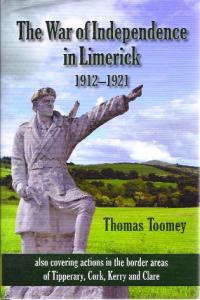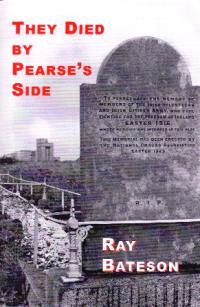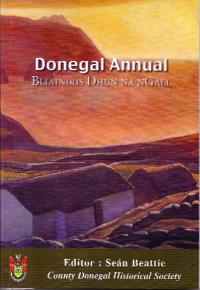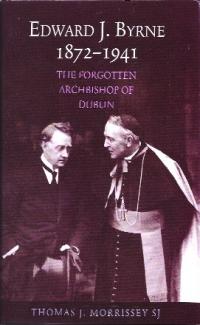BOOKWORM
Published in Book Reviews, Issue 1 (Jan/Feb 2011), Reviews, Volume 19 The press release for Donnacha Ó Beacháin’s pithily titled Destiny of the Soldiers: Fianna Fáil, Irish Republicanism and the IRA, 1926–1973 (Gill & Macmillan, 538pp, €29.99/£26.99, ISBN 9780717147632) claims that it ‘is the first detailed examination of the links between the natural party of Irish government and militant republicanism’. But as the electorate waits in the long grass to chastise the people responsible for the biggest shake-down in our history it remains to be seen whether its destiny will be similar to that of the Irish Parliamentary Party in the general election of December 1918.
The press release for Donnacha Ó Beacháin’s pithily titled Destiny of the Soldiers: Fianna Fáil, Irish Republicanism and the IRA, 1926–1973 (Gill & Macmillan, 538pp, €29.99/£26.99, ISBN 9780717147632) claims that it ‘is the first detailed examination of the links between the natural party of Irish government and militant republicanism’. But as the electorate waits in the long grass to chastise the people responsible for the biggest shake-down in our history it remains to be seen whether its destiny will be similar to that of the Irish Parliamentary Party in the general election of December 1918.
Sinn Féin’s landslide victory in that election, and the overwhelming mandate it represented, subsequently ignored by the British government, led directly to the War of Independence. In recent years there has been an upsurge in local or county histories of the conflict, and Thomas Toomey’s long-awaited and self-published The War of Independence in Limerick 1912–1921 (726pp, €40, ISBN 9780952256854) is the latest in the genre. This is a monumental work detailing all armed encounters in the county from January 1919 to the truce in July 1921 and provides names and numbers, aims and aspirations, results and casualties from both sides of the conflict. And just in case he might have missed something, the dust-jacket states that it ‘also covers actions in the border areas of Tipperary, Cork, Kerry and Clare’! Readers can get a flavour of this meticulously researched book later in the year when an abstract will be published in these pages.
in these pages.
As we count down to the centenary in 2016 the hoary old question, ‘Where was your grandfather/great-grandfather in 1916?’, will inevitably be raised. In anticipation, every public house in the country should get a copy of Ray Bates’s They died by Pearse’s side (Irish Graves Publications, 360pp, €19.99, ISBN 9780954227524), which, using Bureau of Military History witness statements, contemporary reports and other sources, endeavours to provide a more accurate and comprehensive Roll of Honour. It is properly indexed and referenced (a map of 1916 graves in Glasnevin Cemetery is particularly useful), including information on the very interesting images used. It is a pity, therefore, that many of these are smudgy photocopies.
Bookworm makes no excuse for banging on about this. With recent advances in desk-top publishing there is no excuse for shoddy production values on even the most limited budget. Yet local history societies and self-publishers are often short-changed by publishers and printers. Fortunately this is not the case with the most recent, 2010, Donegal Annual/Bliainiris Dhún na nGall (202pp, €25, ISSN 04162773, ISBN 9770416277006), published by the County Donegal Historical Society (www.donegalhistory.com) and edited by Seán Beattie. Not only is it illustrated with high-quality images (many in colour) but the content matches the form, with articles on Freemasonry (by the editor), missionary priests and nuns (Revd Eddie Deeney), Peadar O’Donnell in Texas (Frank Shovlin), Dáil courts (Liam Ó Duibhir), the outbreak of the Troubles in 1969
 (Edward Longwill) and Cahir Healy MP (Helena Meehan), to name but a few. There is an excellent short review section and, if the photos of the various winners of the society’s schools’ history competition are anything to go by, the future remains bright for this historical society and its journal, which have been going strong since their foundation in 1946.
(Edward Longwill) and Cahir Healy MP (Helena Meehan), to name but a few. There is an excellent short review section and, if the photos of the various winners of the society’s schools’ history competition are anything to go by, the future remains bright for this historical society and its journal, which have been going strong since their foundation in 1946.
Donegal features too in the latest batch of the excellent Maynooth Studies in Local History (general editor Raymond Gillespie), published by Four Courts Press. Darren McGettigan’s The Donegal Plantation and the Tír Chonaill Irish, 1610–1710 (72pp, €9.95, ISBN 9781846822643) traces the transformation of a powerful autonomous lordship with a warlike population into a quiet and well-settled territory, albeit with a still largely unplanted and Gaelic western seaboard. Maura Cronin tries to get to the bottom of The death of Fr John Walsh at Kilgraney: community tensions in pre-Famine Carlow (62pp, €9.95, ISBN 9781846822636). She concludes that what was probably a riding accident on 31 July 1835 near Borris was transformed into accusations of sectarian murder because of the disturbed political atmosphere at the time (the height of the Tithe War). In The Famine clearance in Toomevara, County Tipperary (64pp, €9.95, ISBN 9781846822605), Helen O’Brien does not shy away from consideration of the role played by some locals in the cruel evictions of over 500 people in May 1849, which had aspects of a class war. Tony McCarthy traces the fortunes of The Shaws of Terenure: a nineteenth-century [Protestant] Dublin merchant family (64pp, €9.95, ISBN 9781846822629). In The Kimmage Garrison, 1916:
 making billy-can bombs at Larkfield (64pp, €9.95, ISBN 9781846822599), Ann Matthews seeks to redress the absence from the 1916 canon of these c. 90 Volunteers from England and Scotland. Eoin C. Bairéad tells the story of The bombing of Dolphin’s Barn, Dublin, 1941 by the Luftwaffe (70pp, €9.95, ISBN 9781846822612).
making billy-can bombs at Larkfield (64pp, €9.95, ISBN 9781846822599), Ann Matthews seeks to redress the absence from the 1916 canon of these c. 90 Volunteers from England and Scotland. Eoin C. Bairéad tells the story of The bombing of Dolphin’s Barn, Dublin, 1941 by the Luftwaffe (70pp, €9.95, ISBN 9781846822612).
The latest offering from the prolific Thomas J. Morrissey SJ is Edward J. Byrne 1872–1941: the forgotten archbishop of Dublin (Columba Press, 310pp, €19.99/£16.99, ISBN 9781856077033). It was Byrne’s misfortune to be succeeded in 1940 by that great bogeyman of Irish liberals John Charles McQuaid (and a young McQuaid even manages to muscle in on the back of this book’s dust-jacket). Yet Byrne, who became archbishop of Dublin in 1921, presided over the birth of the Irish Free State, the Civil War, the change of government in 1932 and Dev’s constitution in 1937, not to mention the two great ecclesiastical celebrations of the period: the centenary of Catholic Emancipation in 1929 and the Eucharistic Congress in 1932.
Treasures of the National Folklore Collection/Seoda as Cnuasach Bhéaloideas Éireann, edited by Críostóir Mac Cartaigh, Séamas Ó Catháin, Rionach uí Ógáin and Seosamh Watson (National Folklore Collection, 208pp, €50, ISBN 9780956562807), marks the 75th anniversary of the founding of the Irish
 Folklore Commission in 1935. This beautifully designed large-format book is a treasure, packed with high-quality photographs (including the bane of generations of Leaving Cert students, Peig Sayers), drawings of everyday rural artefacts, and facsimiles of some of the meticulously handwritten reports and musical scores transcribed from cylinder recordings (many by Seamus Ennis). Articles (six of the nineteen are in Irish) that caught the eye include Noel Kissanne and Patricia Moloney’s on the chapbook collection and Rosita Boland’s on the schools’ collection (‘Men who could catch horses and rabbits by running after them’). HI
Folklore Commission in 1935. This beautifully designed large-format book is a treasure, packed with high-quality photographs (including the bane of generations of Leaving Cert students, Peig Sayers), drawings of everyday rural artefacts, and facsimiles of some of the meticulously handwritten reports and musical scores transcribed from cylinder recordings (many by Seamus Ennis). Articles (six of the nineteen are in Irish) that caught the eye include Noel Kissanne and Patricia Moloney’s on the chapbook collection and Rosita Boland’s on the schools’ collection (‘Men who could catch horses and rabbits by running after them’). HI
















